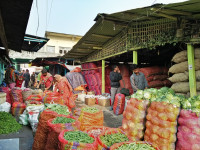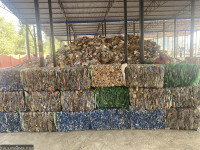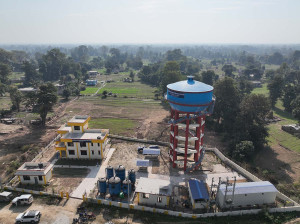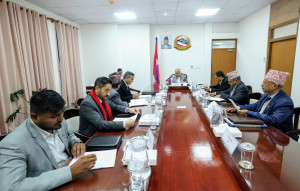Money
ADB unveils $2.3 billion plan to boost green, job-rich growth in Nepal
The concessional financing will drive job creation, private sector growth, and climate adaptation through 2029.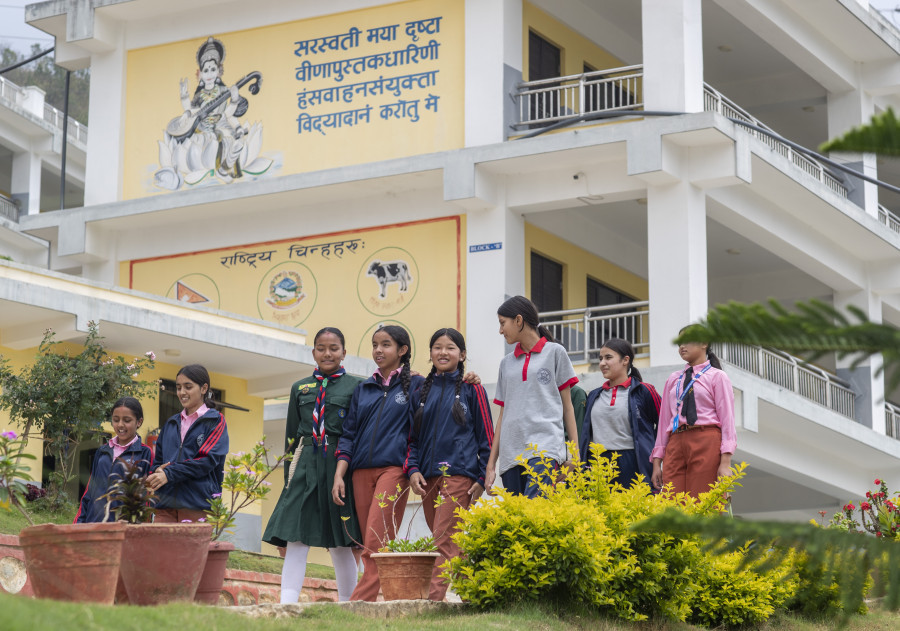
Post Report
The Asian Development Bank (ADB) on Tuesday announced its new Country Partnership Strategy (CPS) for Nepal covering 2025–2029, setting the framework for $2.3 billion in concessional support focused on green, inclusive, and employment-intensive growth.
The strategy centres on three priorities: private sector-led green economic transformation, inclusive and high-quality public services and human capital, and improved climate resilience and environmental sustainability.
“As Nepal prepares to graduate from [the] least developed country status, this strategy supports its shift toward a more resilient and inclusive economic model,” said Arnaud Cauchois, ADB’s Country Director for Nepal.
“It emphasises domestic and foreign investment, job creation, better infrastructure, stronger disaster resilience, and deeper integration into global value chains.”
The CPS aligns with Nepal’s 16th Five-Year Plan and the government's Green, Resilient, and Inclusive Development (GRID) agenda, while incorporating digital transformation, federal governance capacity, and inclusion of women and marginalised communities.
To boost impact, ADB will prioritise focus areas like private sector-led growth, youth employment, and climate resilience. Its flexible approach will include investment projects, policy-based lending, and sector development programmes, combining reforms, capacity building, and infrastructure support.
The CPS was prepared jointly with the World Bank Group to maximise coordination under the 2025 Full Mutual Reliance Framework. The two multilateral banks account for 70 percent of Nepal’s development financing and expand cooperation through shared policy dialogue, project co-financing, and portfolio reviews.
Nepal, a low-risk Group A developing member, will access concessional financing from ADB and project-based grants from the Asian Development Fund 14.
ADB plans to mobilise resources through co-financing, green bonds, thematic financing, and local currency instruments such as rupee-linked bonds. ADB’s core areas of engagement will include energy, transport, water and urban infrastructure, agriculture and rural development, and education. Supporting sectors will include public sector management, finance, trade, and private sector development, alongside climate adaptation.
Nepal faces unique economic constraints due to its landlocked and mountainous geography, which raises trade and production costs and limits regional market access despite its proximity to India and China.
From 1995-96 to 2023-24, Nepal’s economy grew at an average of 4.3 percent annually, with growth increasingly driven by services (62.4 percent of GDP), while manufacturing accounted for just 4.9 percent.
The economy has become heavily reliant on remittances—equivalent to 25.3 percent of GDP last fiscal year—fuelling consumption-led growth. But the ADB said this has eroded competitiveness, contributing to “Dutch disease”-like effects that have weakened exports. Merchandise exports plummeted from 15.4 percent of GDP in 1999–2000 to just 3.2 percent in 2023–24.
Agriculture, vital for rural livelihoods and poverty reduction, remains low in productivity. Fragmented land, labour shortages due to migration, limited irrigation, poor access to markets and finance, and a weak climate for agribusiness investment have stifled the sector. Unpredictable weather, unsustainable farming, and fragile institutions have heightened vulnerability.
The business environment in Nepal remains challenging. Many enterprises are small and informal and lack competitiveness. Around a half are unregistered and employ only a quarter of the workforce. High tariffs, excise taxes, infrastructure gaps, and an appreciated real exchange rate further hinder competitiveness and foreign investment.
Trade and logistics infrastructure is underdeveloped, and despite a legal framework for public–private partnerships (PPPs), project execution capacity is limited. As a result, PPPs are mostly confined to the power sector.
Nepal’s demographic trends offer potential: its working-age population has grown faster than the total population since the 1990s and will continue until 2047. Yet, employment growth has failed to keep pace. Between 2000 and 2022, the employment ratio declined by 0.46 percentage points annually on average.
Low productivity and inadequate job creation have prevented the country from taking advantage of its demographic dividend.
The education system also faces systemic issues. Many students leave school without mastering basic literacy or numeracy, and the lack of qualified teachers in science, mathematics, and English at higher levels hinders learning outcomes.
Technical and vocational education and training (TVET) programmes suffer from poor quality, limited capacity, and governance issues. The ADB said that enrolment in TVET and higher education is also falling as more youths opt to study abroad.
Micro, small, and medium enterprises (MSMEs) dominate the job market, but few are integrated with TVET institutions. Self-employment and informal work remain widespread, underscoring the need for more flexible and market-relevant training.
According to the ADB, Nepal must shift from a remittance- and consumption-driven economy to one based on productivity, private investment, and exports.
Reforms are needed to improve infrastructure, technology adoption, skills development, and access to capital. Stronger integration into global value chains and expanded foreign direct investment are key to long-term growth and the country’s ambition to attain upper-middle-income status within two decades.




 20.12°C Kathmandu
20.12°C Kathmandu